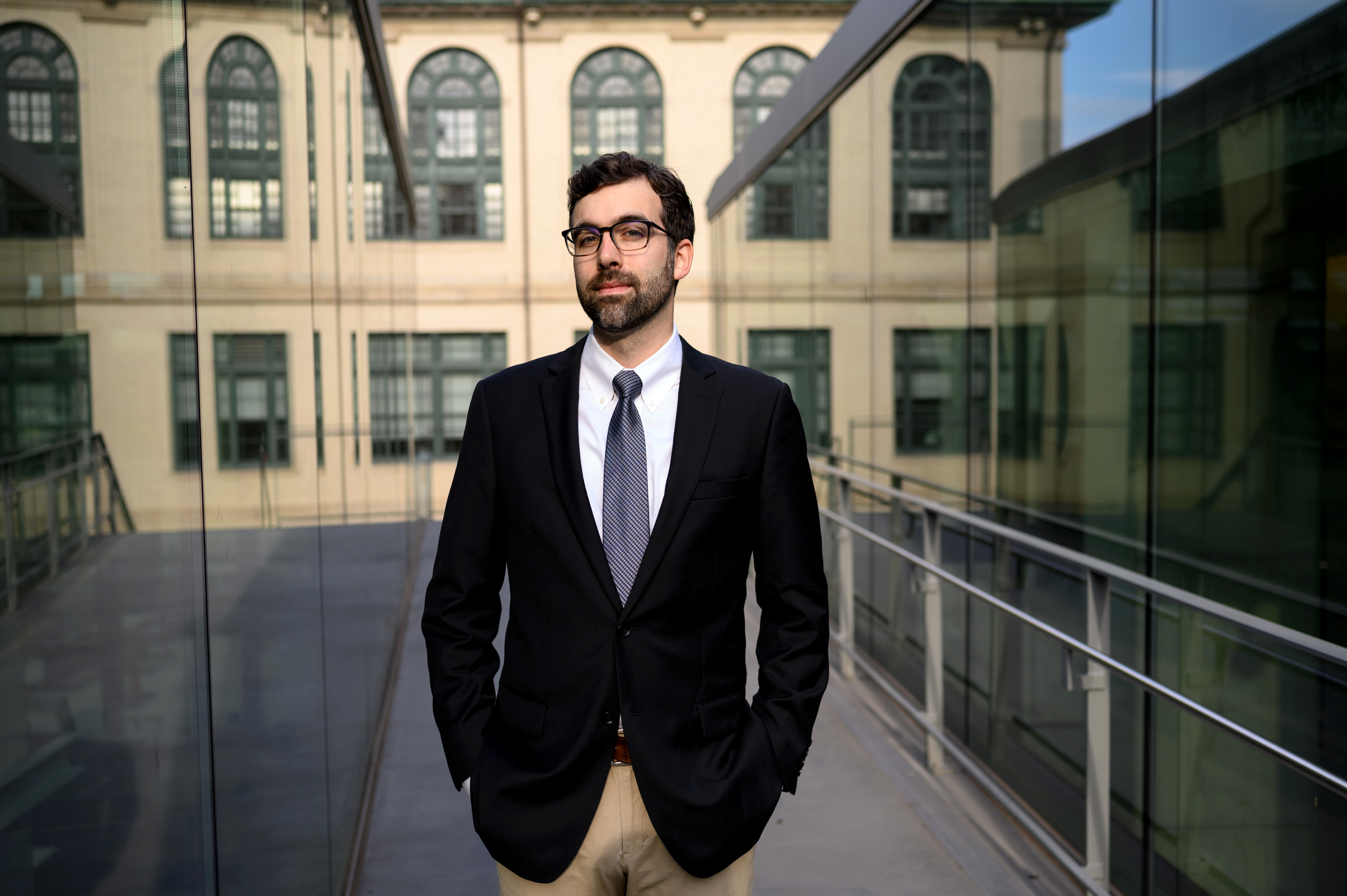Modeling the next generation of materials
Emily Schneider and Kaitlyn Landram
Feb 24, 2022

Source: Carnegie Mellon University
Thomas O’Connor likely spends more time thinking about molecules than most of us. The established researcher joined Carnegie Mellon University’s Department of Materials Science and Engineering this fall as an assistant professor.
O’Connor, a theorist and physicist by education, specializes in simulating the dynamics of polymer materials (plastics) at both the industrial and molecular scale. Simulations allow him to tune physical properties in ways that cannot be done in a laboratory. This allows O’Connor to rapidly explore better ways to process materials. He has demonstrated everything from how polymer chains weave together during additive manufacturing to how best to pour ketchup out of a glass bottle.
“I like taking tools used in math and physics communities and asking how we could use them to break open new opportunities in materials engineering," O’Connor explained. He began working in polymer rheology—the study of how polymers flow and deform when impacted by a stress or force—and developed a reputation for applying new numerical methods to address long-standing problems.
“When I was a student, I learned about this new—and kind of complicated—mathematical method for modeling strong flows, and I realized that we could use it to solve some long-standing problems in polymer engineering,‘ O’Connor recalled, and that is exactly what he’s been doing. For the last three years, he’s worked under the independent Harry S. Truman fellowship at Sandia National Laboratories in Albuquerque, New Mexico, where he had the chance to develop his own research program. One of his largest projects was developing an open-source polymer modeling software called Reproducing Hydrodynamics and Elastic Objects, or RHEO for short. That research is now being brought to Carnegie Mellon.
I like taking tools used in math and physics communities and asking how we could use them to break open new opportunities in materials engineering.
Thomas O'Connor, Assistant Professor, Materials Science and Engineering
Today, O’Connor wants to focus on designing sustainable, soft materials using physical modeling and simulations. Recently, his simulations were used with the Department of Energy Office of Science to show that a special type of polymer liquid made up of polymer rings defies the rule of “strain hardening,” the phenomena where a polymer liquid can be stretched gently so that it does not solidify. Stretching this special type of polymer liquid drives the polymer rings to tie together into long chains that act like massive molecules and ultimately increase the fluid’s viscosity, or its ability to act like a solid. This discovery could be used to make recyclable plastics stronger.
Once the microscopic properties of a particular material, like polymer liquids, are understood, O’Connor can ask how they are best used in manufacturing. “The goal of the group is to not only understand how we can manipulate the properties at the molecular scale, but also how we can use these microscopic insights to improve how industries work with materials on the factory floor.” For example, researchers can use the unique polymer liquid characteristic to help regulate polymer flow in industrial applications by designing intelligent fluids that can become highly viscous when elongated but flow easily under different conditions.
This fall, O’Connor is teaching Methods of Computational Materials Science class alongside Elizabeth Holm, a professor of materials science and engineering who specializes in metallurgical material modeling. With O’Connor’s focus in soft materials, he believes they make for a well-rounded introduction to the discipline.
O’Connor is incredibly excited to work with students in their environment. “Their energy, curiosity, and enthusiasm can be really encouraging, and really helpful. Research can be a long and tedious process, so it's great to spend time with folks with fresh perspectives who are interested and excited about it!”
